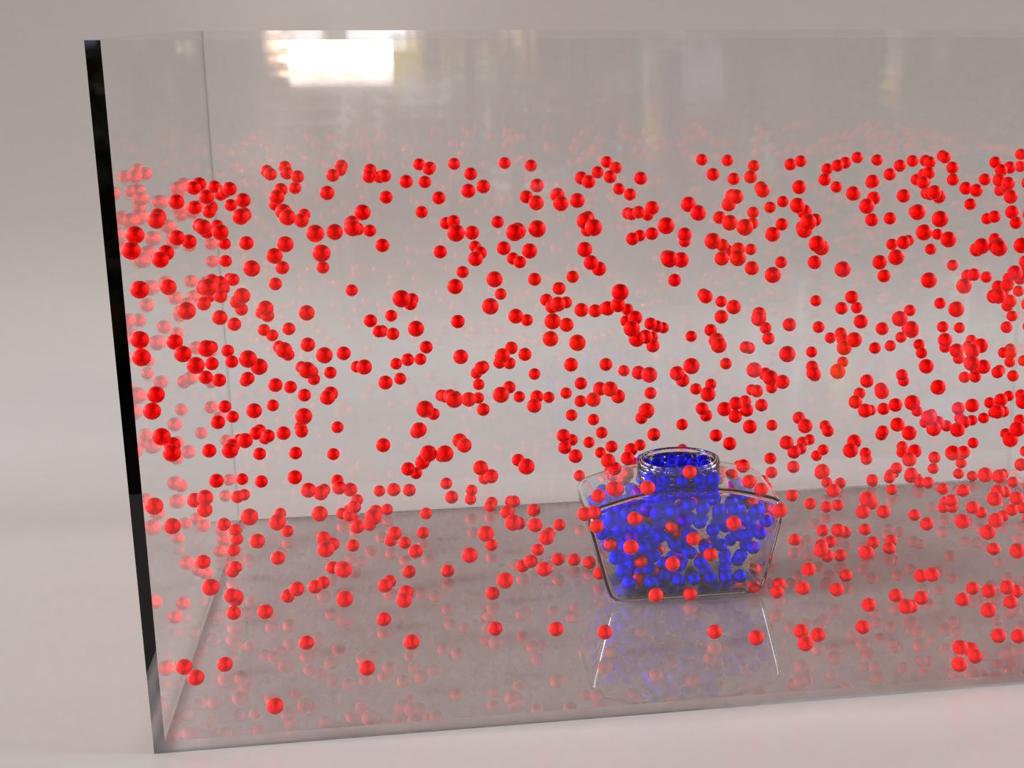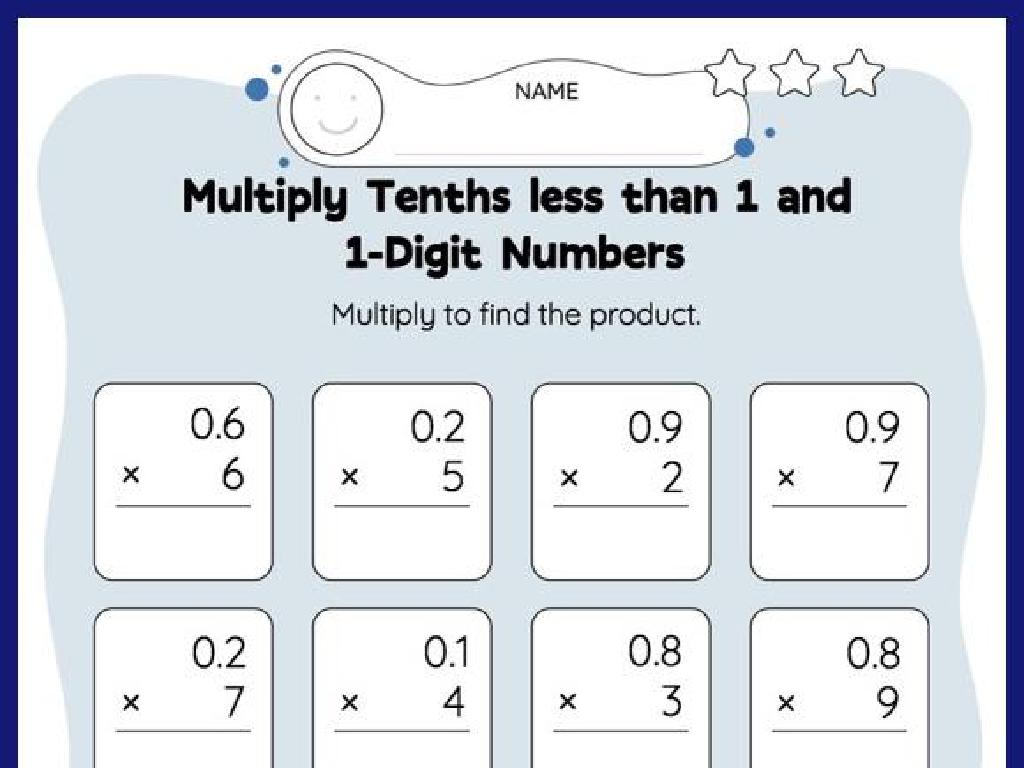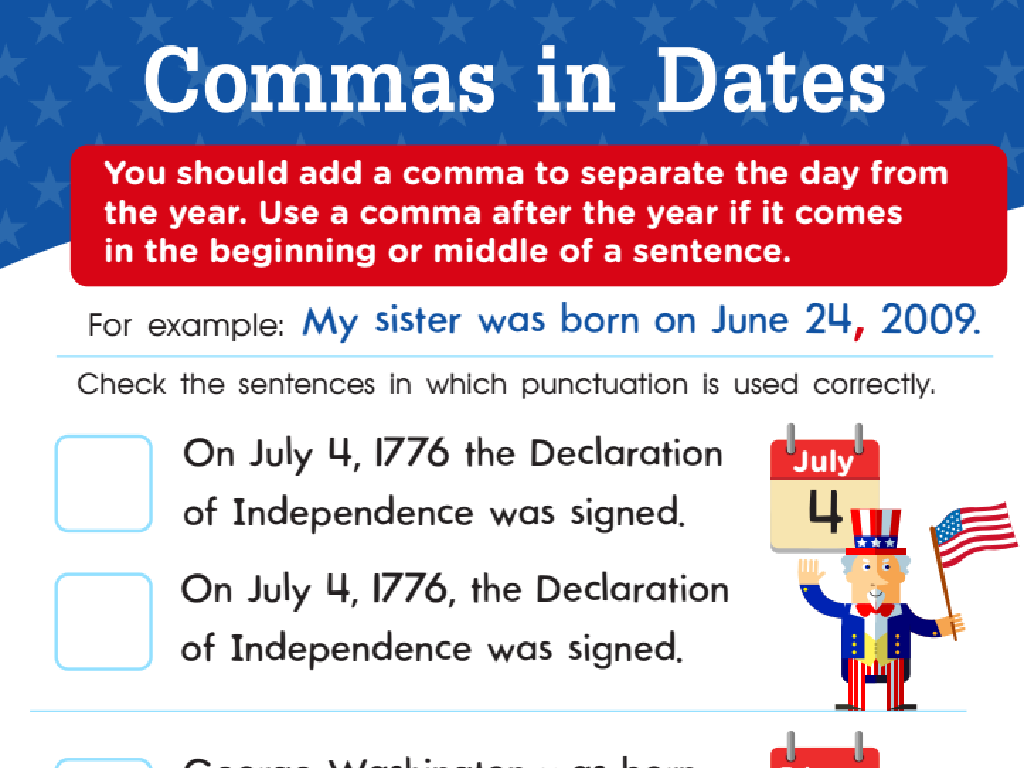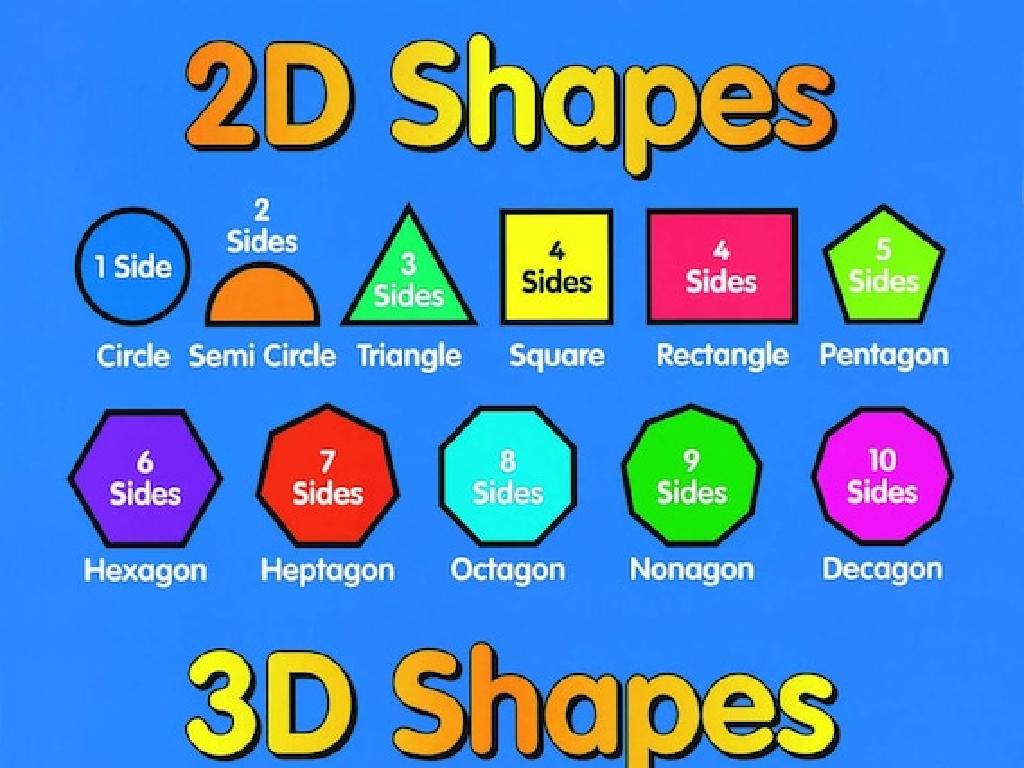Convert Between Repeating Decimals And Fractions
Subject: Math
Grade: Eighth grade
Topic: Rational Numbers
Please LOG IN to download the presentation. Access is available to registered users only.
View More Content
Introduction to Rational Numbers
– Understanding Rational Numbers
– Rational Number Definition
– A number expressible as a fraction a/b, where a and b are integers and b is not zero.
– Examples of Rational Numbers
– Examples: 1/2, -3/4, 0.75, 5, 2.333…
– Non-examples Explained
– Non-examples: Pi (À), square root of 2 ( 2), because they can’t be written as a simple fraction.
|
This slide introduces the concept of rational numbers, which are numbers that can be written as a fraction with an integer numerator and a non-zero integer denominator. It’s crucial to emphasize that all integers, finite decimals, and repeating decimals are rational because they can be expressed in the form a/b. Provide clear examples of rational numbers, including both positive and negative fractions, whole numbers, and decimals. Also, discuss non-examples like Pi and the square root of 2, which are irrational because they cannot be expressed as a simple fraction. Encourage students to think of other examples and non-examples to solidify their understanding.
Converting Repeating Decimals to Fractions
– Define repeating decimals
– Decimals where one or more digits repeat infinitely
– Identify repeating patterns
– Look for digits after the decimal that repeat
– Conversion to fractions
– Use algebraic methods to express as a fraction
– Practice with examples
– Convert 0.333… and 0.666… to fractions
|
This slide introduces the concept of repeating decimals, which are decimals that have one or more digits after the decimal point that repeat infinitely. Students should learn to identify the repeating pattern, which is typically denoted with a bar above the repeating digits. The slide will also cover the method to convert repeating decimals into fractions by setting up an equation that represents the decimal and solving for the variable. Provide examples such as 0.333… (which equals 1/3) and 0.666… (which equals 2/3) to illustrate the conversion process. Encourage students to practice with additional examples and ensure they understand the steps involved in the conversion.
Converting Repeating Decimals to Fractions
– Understand the conversion process
– Learn steps to change repeating decimals into fractions
– Use algebra for conversion
– Set up an equation with ‘x’ to represent the decimal, then solve for ‘x’
– Work through a conversion example
– Example: Convert 0.666… to a fraction
|
This slide introduces the concept of converting repeating decimals to fractions, a key skill in understanding rational numbers. Start by explaining the step-by-step process, ensuring students grasp the concept of repeating patterns in decimals. Then, demonstrate how algebra can simplify this process: let x equal the repeating decimal, multiply by a power of 10 to move the decimal point, and subtract the original equation to solve for ‘x’. Work through an example such as 0.666…, where x = 0.666…, 10x = 6.666…, and 9x = 6, so x = 6/9 or simplified to 2/3. Encourage students to follow along and solve the example with you, reinforcing their understanding through practice.
Converting Repeating Decimals to Fractions
– Convert decimals to fractions individually
– Pair up and share your answers
– After conversion, compare results with a classmate
– Discuss the methods used
– How did you find the fraction? Long division? A formula?
– Understand different approaches
– Some may use algebra, others patterns. There’s more than one way!
|
This slide is designed for a class activity focused on practicing the conversion of repeating decimals to fractions. Students will first work individually to convert a set of given repeating decimals into fractions, using the methods taught in class. Afterward, they will pair up with a partner to compare their answers and discuss any discrepancies. This peer interaction encourages collaborative learning and helps students articulate their thought processes. The discussion should then be broadened to include the entire class, allowing students to explore different methods used for conversion, such as recognizing patterns in repeating decimals, using algebraic expressions, or applying long division. The teacher should facilitate the discussion, ensuring that each method is explained and understood by all students. This activity not only reinforces the mathematical concept but also develops communication and critical thinking skills.
Converting Fractions to Repeating Decimals
– Conversion process overview
– Long division to find patterns
– Divide numerator by denominator to see the decimal repeat
– Class example: Fraction to decimal
– Let’s convert 1/3 together and observe the repeating 3
– Practice with different fractions
– Try converting 2/9 and 5/6 as homework
|
This slide introduces the concept of converting fractions to repeating decimals, which is a key skill in understanding rational numbers. Start by explaining the conversion process, emphasizing that every fraction can be expressed as a decimal. Use long division on the board to demonstrate how the repeating pattern emerges. For the class example, work through 1/3 step by step, showing the decimal 0.333… and explaining the bar notation. Encourage students to participate by asking what they notice about the pattern. Assign different fractions as practice for homework, ensuring they include both simple and more complex examples to challenge the students and reinforce the concept.
Class Activity: Repeating Decimal Art
– Group activity on repeating decimals
– Convert fractions to repeating decimals
– Use common fractions like 1/3, 1/6, 1/9
– Create ‘Repeating Decimal Art’
– Arrange the decimals to form a creative pattern
– Share your art and explanation
– Discuss the patterns and the conversion process
|
This activity is designed to encourage collaboration and creativity while reinforcing the concept of converting fractions to repeating decimals. Divide the class into small groups and provide them with a list of common fractions to convert. Once they have their repeating decimals, each group will create an artistic pattern using the numbers. This could be in the form of a drawing, a collage, or any other creative arrangement. After completing their ‘Repeating Decimal Art’, groups will present their work to the class, explaining the conversion process and the idea behind their pattern. This will help students understand the concept in a fun, interactive way and allow them to see the beauty in mathematics. Possible variations for different groups could include using different sets of fractions, creating themed art, or even incorporating other mathematical concepts into their artwork.
Review: Decimals to Fractions Conversion
– Recap conversion steps
– Write decimal as fraction, find repeating part, solve using algebra
– Significance of rational numbers
– Rational numbers are essential in math and real-life calculations
– Homework: 5 conversions
– Convert five repeating decimals to fractions and back
– Practice reinforces learning
|
As we close today’s lesson, it’s crucial to review the steps for converting repeating decimals to fractions. This process involves writing the repeating decimal as a fraction with an unknown, using algebra to solve for the unknown, and simplifying the result. Understanding rational numbers is fundamental as they appear in various aspects of mathematics and everyday life, such as in measuring and financial calculations. For homework, students will solidify their understanding by converting five repeating decimals to fractions and vice versa. This practice will help reinforce the concepts learned in class and prepare them for more complex mathematical challenges.






